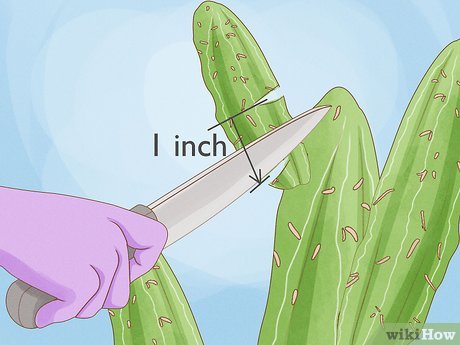Pruning a cactus can be a daunting task, especially for those unfamiliar with the unique structure and needs of these resilient plants. Cacti, well-known for their hardy nature, require specific techniques to ensure they thrive, especially when it comes to pruning. This article will elucidate the essential steps and precautions necessary for pruning cacti without damaging these fascinating members of the plant kingdom.
Understanding the Importance of Pruning
Pruning serves several purposes. It promotes healthy growth, allows for better airflow, and helps to maintain the aesthetic appeal of the cactus. Additionally, regular pruning can prevent diseases that may stem from overcrowded or dying sections. In essence, proper pruning rejuvenates the plant, encouraging it to flourish.
A crucial consideration is timing. The ideal season for pruning cacti is during the growing season, typically in the spring or early summer. This timing allows the plant to recover and heal from the cuts made. Pruning during dormancy, usually in the fall or winter, can stress the plant, making it susceptible to illnesses.
Picking the Right Tools for the Job
To effectively prune a cactus, having the correct tools is paramount. The following items are essential:
1. Sharp Pruning Shears or Scissors: A pair of sharp shears ensures clean cuts, minimizing damage to the plant. Dull blades can crush tissue, leading to increased risk of rot or disease.
2. Gloves: While most are familiar with the protective qualities of gloves, it’s especially important with cacti due to their spines. Leather or thick synthetic gloves are advisable to prevent painful punctures.
3. Clean Wiping Cloth or Alcohol Spray: Disinfecting tools before and after use is crucial to prevent the spread of pathogens. A simple cloth or spray can assist in maintaining hygiene.
4. Tweezers or Forceps: For small spines or difficult-to-reach areas, employing tweezers can be highly effective in removing spines or debris without causing damage to surrounding tissue.
Before beginning, ensure that all tools are sterilized to eliminate any potential pathogens that may compromise the health of your cactus.
Technique: How to Prune a Cactus
With your tools ready, it’s time to delve into the practicalities of pruning. Following a systematic approach can yield optimal results.
Identifying Where to Prune: The importance of identifying which areas to prune is paramount. Look for sections that are dead, damaged, or overgrown. Signs of deterioration include browning, softness, or discoloration. Healthy pads or stems typically have a vibrant color and firm texture.
For a cactus with multiple arms or sections, you may choose to remove those that appear weaker or are crowding the center. This enhances light penetration and airflow, which are beneficial for overall health.
Making the Cuts: Always make cuts at a slight angle to encourage moisture runoff, reducing the chance of rot. When severing a pad or stem, aim for about one-third of its length to avoid making the plant overly stressed. Avoid cutting too close to the base; leave some material to aid in healing and to prevent infection.
For those working with larger cacti that require substantial work, consider tapering off the cuts gradually across multiple seasons. This technique mitigates stress and encourages a gradual recovery, lending the plant time to adapt.
While it may be tempting to remove excessive spines, it’s generally best to leave them intact unless they pose a significant risk to the health of the plant. Spines serve vital roles, including protection against herbivores and aiding in moisture retention.
Post-Pruning Care: After the actual pruning is complete, care for the cactus remains essential. Allow the cuts to dry and callous over for around a week before watering. Uneven or overly moist cuts can lead to rot, negating the benefits of your diligent efforts.
During this recovery phase, keep the cactus in a location with ample sunlight and good airflow. Avoid fertilizing immediately after pruning; instead, allow the plant to stabilize before introducing any nutrients. Providing a balanced, diluted fertilizer after a week or two can encourage new growth.
Assessing the Results
After a few weeks, observe the cactus for signs of new growth which indicates successful pruning. This snapshot moment allows gardeners to celebrate their diligent efforts and recognize the beauty of rejuvenated plants. Regularly assessing your cactus’ progress will help you make informed decisions for future maintenance.
Common Missteps to Avoid
While pruning can enhance the vitality of a cactus, certain missteps can lead to detrimental effects. Avoid these common pitfalls:
Pruning at the Wrong Time: As previously mentioned, tackling this chore during dormancy can shock the plant.
Over-Pruning: Too much removal can strip away the plant’s defenses and hinder its ability to photosynthesize.
Neglecting Hygiene: Failing to clean tools can introduce pathogens, risking the health of the cactus.
In conclusion, properly pruning a cactus is an invaluable skill that pays dividends in the long run. Armed with the right tools and knowledge, even novice gardeners can maintain healthy and aesthetically pleasing cacti without inflicting damage. Understanding the intricate needs of these unique plants is vital to fostering a thriving indoor or outdoor oasis. With patience and practice, anyone can master the art of cactus care, ensuring these remarkable plants flourish for generations to come.





Leave a Comment